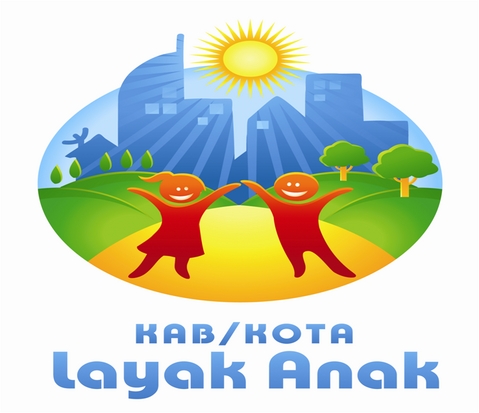Implementation of the Child-Friendly City Policy in Bengkulu: An Analysis of Child-Friendly Play Spaces Provision
Implementasi Kebijakan Kota Layak Anak di Bengkulu: Analisis Penyediaan Ruang Bermain Ramah Anak
DOI:
https://doi.org/10.21070/jkmp.v13i2.1950Keywords:
Child-Friendly City, Child-Friendly Play Spaces, Policy Implementation, Children's RightsAbstract
Child-Friendly Play Spaces (CFPS) are critical indicators of Child-Friendly City (CFC) implementation, yet significant gaps persist between policy and practice. This study will address the progress gap in the CFSP in Bengkulu City based on George C. Edward III's understanding of policy implementation. The researcher investigates the issue qualitatively, conducting in-depth interviews, direct observation of CFPS in 13 locations, and document analysis using a qualitative approach. An examination of the technical standards of the CFPS and the Ministry of Women's Empowerment and Child Protection indicates that none of the CFPS are compliant. This study faces four obstacles: a lack of inter-agency relationships, with only two or three meetings throughout the year; a lack of human and financial support; a lack of appropriate and positive disposition from implementers who focus on achieving administrative objectives rather than substantive targets; and a weak bureaucratic structure due to the absence of Standard Operating Procedures. This study adds to the literature on policy implementation by describing the phenomenon of decoupling by detailing the recognition of the administrative side of implementation (six consecutive Pratama awards) and the lack of quality on the substantive side of implementation. The study recommends institutional transformation, capacity building, adequate budget allocation, and systematic cross-sectoral coordination to genuinely fulfill children's rights to safe and appropriate play spaces.
References
Ardiansyah, Risnita, & Jailani, M. S. (2023). Teknik Pengumpulan Data Dan Instrumen Penelitian Ilmiah Pendidikan Pada Pendekatan Kualitatif dan Kuantitatif. Jurnal IHSAN : Jurnal Pendidikan Islam, 1(2), 1–9. https://doi.org/10.61104/ihsan.v1i2.57
Chandra, P. S., & Putri, S. S. E. (2021). Analisis Pelaksanaan Kebijakan Kota Layak Anak (Studi Kasus Pelaksanaan Program Ruang Bermain Ramah Anak Di Ruang Terbuka Hijau Kacang Mayang Kota Pekanbaru). Jurnal Manajemen Dan Ilmu Administrasi Publik (JMIAP), 3(1), 72–83. https://doi.org/10.24036/jmiap.v3i1.261
Dewi, Y. C., & Agustina, I. F. (2018). Implementasi Kebijakan Penataan Ruang Terbuka Hijau Publik Di Kabupaten Sidoarjo. JKMP (Jurnal Kebijakan Dan Manajemen Publik), 6(2), 129–135. https://doi.org/10.21070/jkmp.v6i2.3007
Fadly, M., & Syafri, W. (2019). The Implementation of Child-Friendly City Development In Bengkulu City. International Journal of Kybernology, 4(1), 59–70. https://doi.org/10.33701/ijok.v4i1.640
Jansson, M. (2015). Children’s perspectives on playground use as basis for children’s participation in local play space management. Local Environment, 20(2), 165–179. https://doi.org/10.1080/13549839.2013.857646
Jumanah, Ruliyansyah, D., Miranda, E., & Yuliani, E. (2023). Implementasi Kebijakan Perlindungan Khusus Pada Program Kota Layak Anak (KLA) di Indonesia. JIPAGS (Journal of Indonesian Public Administration and Governance Studies), 7(1), 12–22.
Kismartini, K., & Nugraheni, E. (2020). Policy Implementation of Tree Management in Public Green Open Spaces, Green Lines and Parks in Semarang City. Proceedings of the Proceedings of the 4th International Conference on Indonesian Social and Political Enquiries, ICISPE 2019, 21-22 October 2019, Semarang, Central Java, Indonesia. https://doi.org/10.4108/eai.21-10-2019.2294398
Lubis, E. F., & Zubaidah, E. (2022). Implementasi Program Kota Layak Anak (KLA) di Kota Pekanbaru. Jurnal El-Riyasah, 12(2), 252. https://doi.org/10.24014/jel.v12i2.14298
Madani, M., Iva, M. I. N., & Amiruddin, I. (2021). Peran Street Level Bureaucracy dalam Implementasi Kebijakan Perlindungan Lahan Pertanian Pangan Berkelanjutan di Kota Makassar. Kolaborasi: Jurnal Administrasi Publik, 7(3). https://doi.org/https://doi.org/10.26618/kjap.v7i3.6406
Maritha, D., & Uty, H. (2022). Problems And Strategies For Achieving Child Friendly Province In Aceh Province. Jurnal Transformasi Administrasi, 12(1), 56–68. https://doi.org/https://doi.org/0.56196/jta.v12i01.206
Melira, R. (2018). Perlindungan Hak-Hak Anak Jalanan Di Kota Padang Ditinjau Dari Undang-Undang Nomor 23 Tahun 2002 Tentang Perlindungan Anak. ADIL: Jurnal Hukum, 9(1), 050–066. https://doi.org/10.33476/ajl.v9i1.664
Namma, R. H., & Setiamandani, E. D. (2017). Implementasi Program Kebijakan Kota Layak Anak Dalam Perspektif Kesejahteraan Sosial. 6(3), 22. www.publikasi.unitri.ac.id
Nisa, F., & Tamrin, M. H. (2025). Digital Transformation and Multi-Level Collaboration in Regional Tax Data Collection: A Case Study of Local Governments in Indonesia. JKMP (Jurnal Kebijakan Dan Manajemen Publik), 13(1), 17–27. https://doi.org/10.21070/jkmp.v13i1.1824
Nurusshobah, S. F. (2019). Konvensi Hak Anak Dan Implementasinya di Indonesia. Biyan: Jurnal Ilmiah Kebijakan Dan Pelayanan Pekerjaan Sosial, 1(2). https://doi.org/https://doi.org/10.31595/biyan.v1i2.211
Prameswari, Z. W. A. W. (2017). Ratifikasi Konvensi Tentang Hak-Hak Anak Dalam Sistem Peraturan Perundang-Undangan Di Indonesia. Yuridika, 32(1), 167. https://doi.org/10.20473/ydk.v32i1.4842
Primawardani, Y., & Kurniawan, A. R. (2017). Pendekatan Humanis dalam Penanganan Anak Pelaku Tindak Pidana Penyalahgunaan Narkoba Studi Kasus di Provinsi Sulawesi Selatan. Jurnal Penelitian Hukum De Jure, 17(4), 411–427. https://doi.org/10.30641/dejure.2017.V17.411-427
Putri, P. A. W., & Sri, S. W. (2024). Implementasi Kebijakan Kota Layak Anak Di Kabupaten Nganjuk. Journal Publicuho, 7(2), 579–590. https://doi.org/10.35817/publicuho.v7i2.394
Rahmayuni, S., & Asrida, W. (2017). Strategi Pemerintah Kota Pekanbaru Dalam Pengembangan Kota Layak Anak Di Kota Pekanbaru Tahun 2014. Jom Fisip, 4(2), 2–15.
Riansyah, R., & Bella, P. A. (2023). Studi Keberhasilan Penerapan Kriteria Ruang Bermain Ramah Anak Pada Taman Kota Di Kota Bandung (Objek Studi: Taman Tongkeng). Jurnal Sains, Teknologi, Urban, Perancangan, Arsitektur (Stupa), 5(1), 419–430. https://doi.org/10.24912/stupa.v5i1.22698
Rodiyah, I., & Sanggito, R. T. D. N. (2021). Coordination of Actors in The Application of Child-Friendly City in Sidoarjo District. JKMP (Jurnal Kebijakan Dan Manajemen Publik), 9(2), 83–90. https://doi.org/10.21070/jkmp.v9i2.1579
Saphira, B., Tulis, R. S., Setiawan, F., Ayu, K. P., & Sahay, M. F. A. (2024). Palangka Raya City’s Strategy to Overcome Congestion in the School Area. JKMP (Jurnal Kebijakan Dan Manajemen Publik), 12(2), 110–121. https://doi.org/10.21070/jkmp.v12i2.1781
Sumardi, S., Morganna, R., & Samiati Tarjana, S. (2018). Immersion VS. Construction: The Portrayals of Culture in Indonesian EFL Learning Paradigm. Journal of Language and Linguistic Studies, 14(2), 283–304.

Downloads
Published
License
Copyright (c) 2025 Dwi Fitriani Junanti, Tamrin Bangsu, Rosi L Vini Siregar

This work is licensed under a Creative Commons Attribution 4.0 International License.















